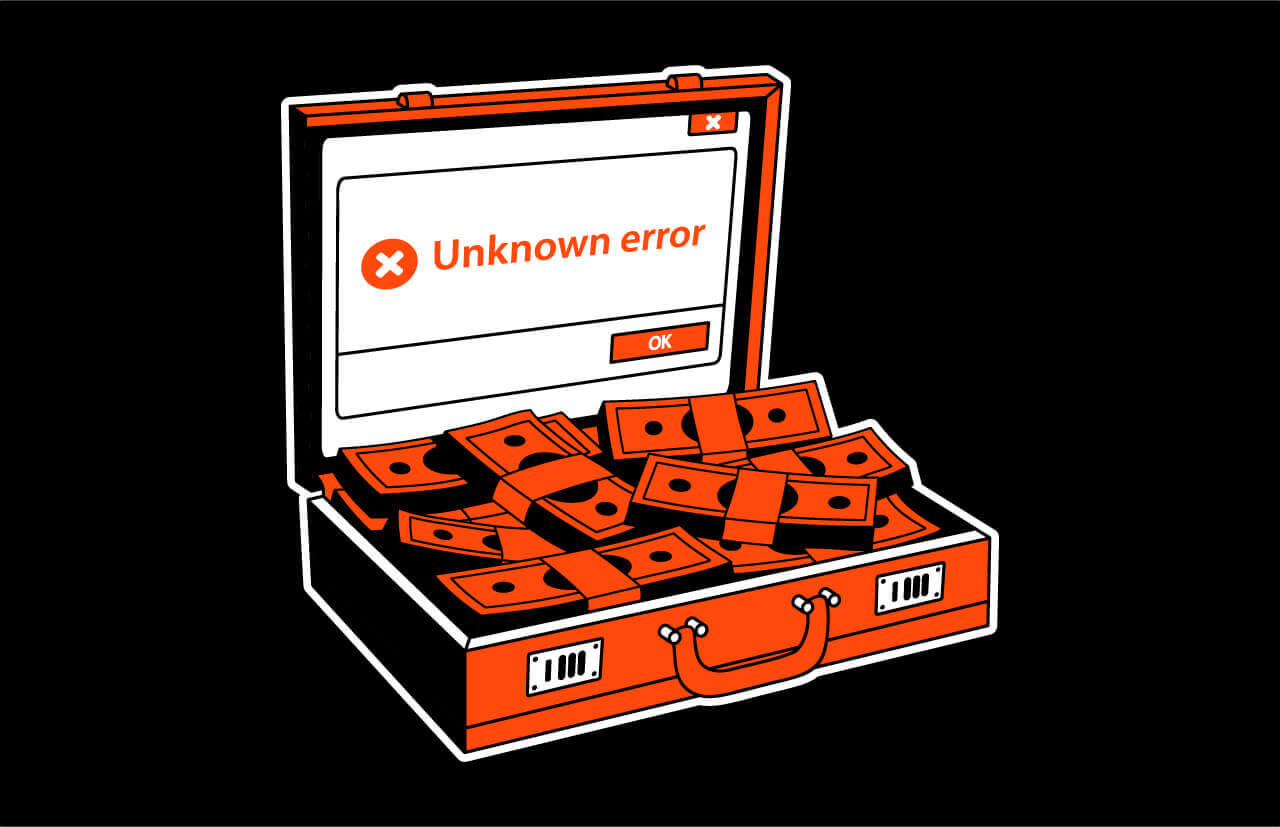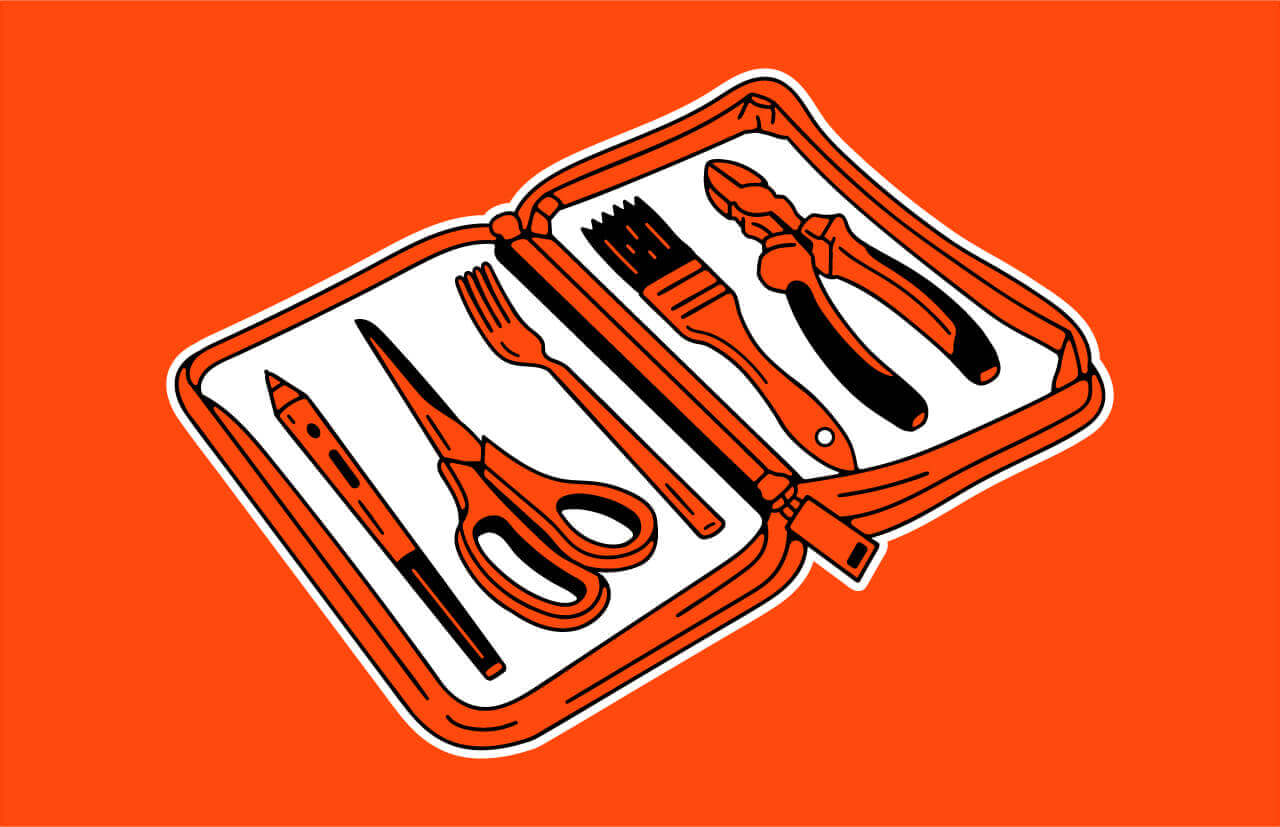Life would be great if landing a Series A investment guaranteed endless growth.
But as every entrepreneur who’s reached this milestone will tell you, getting funded ensures one thing above all else: an increased pressure to grow, not a certainty of it.
The steps you take after you’ve secured the financial resources can either lead you to the desired exponential growth… or to a slow and painful business death.
Today, we’re going to look into why some of the well-backed startups haven’t achieved the growth they and their investors were hoping for – and how you can avoid making the same mistakes they did.
How we got the data
Well, we asked for it. Having worked with dozens of startups over the past years – from entry-level projects on tight budgets to aspiring unicorns with millions of customers – we approached their founders and asked them a simple question: If your growth stopped at some point in the past, what had caused it?
Today, we’re going to look into why some of the well-backed startups haven’t achieved the growth they and their investors were hoping for – and how you can avoid making the same mistakes they did.
Understandably, not everyone is willing or allowed to share this internal information. So we promised to keep the founders’ and their companies’ names to ourselves.
Nevertheless, the mistakes were authentically theirs to make and learn from. Without further ado, let’s look into the top five we heard, followed by our input on how you can stay on the right track to exponential growth.

critical web design mistakes to avoid
Mistake #1: Your weekly plan is lacking actionable steps for exponential growth
According to Y Combinator, startups should focus on maintaining an average weekly growth rate of six percent.

What’s so magical about the recommended numbers? Let’s take a look at a real-life example of a startup whose app’s user base is fifty people strong and grows at a six-percent rate.
Six percent doesn’t seem like something that could make or break your business, but compounding is your best friend here – look at how it adds up to a dramatic impact on the user base over three years.

The difference between three and six percent seems insignificant during the first year. It’s barely a couple thousand users! But after the second year, those three additional percentage points really start to pay off.
With a modest six-percent growth rate, your startup reaches eighty times more users in three years compared to a three-percent rate.
And here’s the good stuff: whereas it would take 3 years to achieve your target with a 6% growth rate, it would take a whole 10 years with a 3% growth rate – in the startup world, that might as well be a lifetime.
If you want to play around with your data, here’s a link to my model (click “file -> make a copy” to make changes).
What you can do right now
As you just saw, every percentage point matters if you’re in this for the long run. You should adjust your plan to aim for at least a five-percent growth per week as soon as possible.
What if you’re already in the scale-up phase?
It would be naive to come to a big player and suggest a six-percent weekly growth rate. Let’s take a look at how larger companies grow.
Spotify, for example, had just 68 million monthly active users in 2015. By 2019, however, the number had increased to 271 million.
Pretty captivating for investors, and yet it’s just a 0.02% weekly growth because in total it’s a 390% increase in just 4 years.
A few hundredths of a percent isn’t something you should be aiming for in the first few years of your startup. But as your business grows, your market share is getting larger.
This means there are fewer customers who aren’t using your product yet, which inevitably changes the growth rate perspective.
Mistake #2: The majority of your users come from paid marketing channels
This one is pretty straightforward. Paid user acquisition is very expensive, with the average cost per sign up hitting $5. With web services, it’s just slightly better with an average cost per user around $3.

If you rely solely on paid user acquisition, you’d need to spend gazillions of dollars just to lift your startup off the ground.
And even if you did have the money to spend, chances are you’d end up like Unicorn (yes, that was the actual name of the company). They went bankrupt after having plowed all of their money into Facebook Ads without ever delivering a single scooter to customers.
But what’s even worse than relying fully on paid campaigns?
Not putting analytics in place, thus having no way to measure how many users you paid to acquire and how many came to you organically.
No analytical tool in place means you are acquiring users blindfolded.
What you can do right now
Nurture your organic growth, because that’s the key to big numbers if you’re not a household name (yet). How do you do that? Check the next step.
Mistake #3: You don’t motivate your existing users to recommend the product
When it comes to convincing people to hit that download button, a recommendation from a friend is key. No wonder it can account for more than three-quarters of your total signups. So how do you get more of your users to shout about your product to their peers?
If your business model isn’t viral by nature, it’s a good idea to enrich your product with a component that will boost recommendations. Let’s look at the three most powerful ways to do that.
1. Reward the sharer and the referrer
This is motivation 101. Simply provide an incentive for both sides of the deal, e.g. using one of these techniques:
In Gamification by Design, industry expert Gabe Zichermann shows a hierarchy of rewards based on their relative power to drive engagement and retention.

As you can see, offering material stuff is a costly and less powerful approach to keeping users engaged.
So before you start drowning people in your merch, tap into their love of exclusivity by giving them the chance to unlock special statuses or features.
How can you make rewards even more motivating?
Wendy Despain, the author of 100 Principles of Game Design, provides some great advice on this: “If the player knows exactly what reward they are going to get, it removes any surprise from the equation, the reward feels flat and unengaging”.
This means that a smart way of generating excitement is to ramp up the mystery factor.

While conventional wisdom says that people like to know what they stand to gain from an action, a study from the University of Chicago Booth School of Business found that uncertainty can play an important role in turning a one-off action into repeated behavior.
They explained that "People repeat a task more for an uncertain incentive than for a certain incentive, even when the uncertain incentive is financially worse."
The popularity of WeChat Pay, one of the largest mobile payment apps in the world with 1 BILLION monthly active users, is one example.
After tapping to pay with WeChatPay, a mobile payment user is sometimes awarded a bonus of an uncertain size. This strategy motivates the user to pay with this app again and see how large the bonus will be the next time, and the next time, and the next time.
On a project we've recently worked on, adding an element of uncertainty into the reward resulted in a 35% increase in the number of people completing the task.
The bottom line is: Keep your rewards mysterious and repetitive if you want to engage users in repeating the desired action.
2. Motivate users to share what they achieved
How does your product make people’s lives more fulfilled? Better organized? Healthier? Answer this question, and give your users an easy way to share it.
Spotify is a great example – they package up usage stats and offer them as an end-of-year gift to users in their “Year wrapped” project.

Another area where this incentive works extremely well is fitness apps.
Fitbit lets you share your achievements in just a few taps – perfect for those who love to tell the world about their 10K morning run. Same with Strava, which turns the whole thing upside down and serves as a social network for athletes first, sports performance tracking app second.
Instead of pretty pictures and witty statuses, you share your workouts – the mechanics of a social network are deeply rooted in how people use the app, and the incentive to share how you performed couldn’t be better executed.

What happens next is that new potential users see these posts and jump on board – either to just track and share their stats to motivate themselves or for the sense of healthy competition among friends. When the latter sparks a community spirit around your product, you’ve won!
3. For apps: motivate users to leave positive reviews in the app store
The first thing people see when downloading an app is user reviews.

You don’t need to dive too deeply into the stats to realize how important these reviews are. Just imagine yourself browsing the app store. When you come across an app with a one-star rating, how likely are you to download it and give it a try? On the other hand, an app with 4.7 stars is a no-brainer.
- Resolving a complaint in the customer's favor will result in them doing business with you again 70% of the time.
- A dissatisfied customer will tell 9-15 people about their experience.
To increase your chances of getting great reviews, don’t just ask your users to leave positive comments – ask them only when the time is right. That is, wait until they’ve spent some time in your app and had a chance to explore your best features.
Only when your users got their dose of dopamine should you take a bold step and ask them for a five-star review.
What you can do right now
- Offer unexpected and exciting rewards for sharing your app
- Let users show their stats and achievements on social media
- Nudge people into leaving positive reviews in the app store when the time is right
Mistake #4: Your onboarding is a pot-holed road that makes the final destination unreachable
If you were to take just one thing from this article, we’d like it to be this: Your growth starts with your onboarding. Don’t underestimate it!

Having analyzed dozens of onboarding sequences in multiple products, we learned that to make a user stick around you need to do these two things.
1. Get you onboarding screens right
Onboarding is going to set the tone for your entire UX, so make the most of it.
- Keep it short. Showcase up to three benefits of your service and think twice before you add the fourth one. These should be the “toothbrush features”, i.e. the features people will use once or twice a day.
- Highlight the value. Don’t just let your features do the talking – tell users how exactly they’ll benefit from using them. Instead of “create your personal website”, write “build a modern, responsive website that will bring you more customers in minutes”.
- When you showcase your features, consider using a video or auto-rotating carousel that takes people through the benefits.
2. Define what leads to retention
What’s the secret sauce people come back for? Dig deep, and you might be surprised – sometimes it’s a feature or a use case you’ve thought of as secondary. Once you find it, it will become the magic bullet for your product’s growth.
For example, in a file-storage service we’ve been working on, retention skyrocketed for users who uploaded more than 10 files.
Once you’ve defined this, put all your effort into it. Every single piece of your service should lead users to do that crucial action before they have a chance to forget about you.
What you can do right now
- Make your onboarding short and on point. Tell users how your service can solve their problems.
- Define the one key feature that retains users. Put all your effort towards perfecting it.
Services to check onboarding references:
Mistake #5: Your product simply isn’t aligned with modern user experience
McKinsey tracked 300 global companies for 5 years to show that companies with exceptional product design have 32% higher revenue growth than those with immature design.
Great UX leads to retention and – the holy grail – people evangelizing about your brand or product.
How your product looks is an often overlooked aspect of growth, but to keep users recommending your product you must provide a memorable experience that will inspire people to come back and share it with friends.
How can you achieve this?
Make your UI stand out. Make it simple and intuitive, add micro-interactions, make it unique and playful.
Or, to start with, check out these two examples – the difference between their visual look and feel caused a retention increase of 20%.

What you can do right now
It's the little things that matter. Don’t underestimate the tiniest little details in your UI.
Need help with a new look and feel? Our team can revamp your visual design within 5 days.
What you’ll get:
- a visual concept for your website or mobile app
- clear guidelines on how to use it
- actionable recommendations on how you can improve your business
- Show example before / after
- CTA: Get a quote
- CTA opens a form with fields: name, email, link to current service if applicable.
Conclusion
While luck still plays an important role in your startup’s success, it would be naive to think it’s just that. After all, you can’t time luck just like you can’t time the market – it’s only afterward that you realize you were in the right place at the right time.
So focus on what’s under your full control instead:
1. Prepare a thorough and actionable strategy.
2. Make the best design choices you can.
3. Nurture your customer retention and growth.
I hope this guide will steer you and your startup in the right direction, and for even more hard-won wisdom, stay tuned – we’ll continue to gather insights from projects we work on and elsewhere, and we’ll keep you updated once there’s more to share.
Subscribe to hear about legendary business pivots on our CTRL SHIFT podcast.





